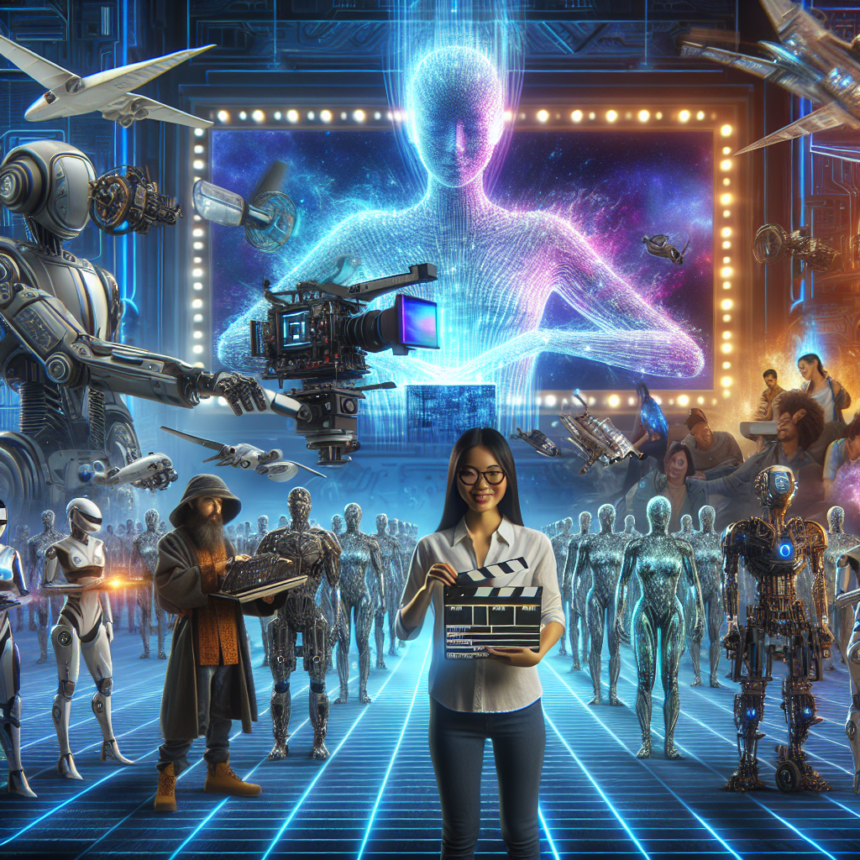The world of cinema has always been at the forefront of technological innovation. From the early days of black-and-white silent films to the vibrant visuals of contemporary blockbusters, advancements in technology have consistently transformed the movie-making process. Today, emerging technologies are not just enhancements but revolutionary tools that are reshaping the landscape of film production.
1. Virtual Reality and Immersive Experiences
As audiences seek more engaging experiences, Virtual Reality (VR) is gaining traction in film production. VR has the ability to transport viewers into the heart of the story, allowing them to explore environments and interact with characters in ways traditional film cannot offer. Filmmakers are embracing VR not just as a marketing tool but as a new medium of storytelling. With VR headsets becoming more affordable and accessible, the potential for fully immersive cinematic experiences is immense, pushing the boundaries of narrative structure.
2. Artificial Intelligence in Scriptwriting and Editing
AI has emerged as a powerful ally in the movie-making process. From scriptwriting to editing, AI tools are streamlining workflows and enhancing creativity. Advanced algorithms analyze scripts to suggest plot adjustments, optimize dialogue, or predict audience reactions based on data-driven insights. Editing becomes an accelerated process with AI systems capable of identifying the best cuts and transitions, allowing filmmakers to focus on creativity rather than logistics. This integration empowers artists while vastly reducing production time and costs.
3. Advanced CGI and Visual Effects
Computer-generated imagery (CGI) has transformed how filmmakers approach visual effects, enabling them to create breathtaking worlds and lifelike characters. The latest advancements in CGI, including photorealistic rendering and real-time graphics, allow for seamless integration of live-action with virtual elements. Films like “Avatar” and “The Mandalorian” showcase the potential of CGI, demonstrating how virtual sets and augmented backgrounds can revolutionize production. This tech not only cuts costs but also grants filmmakers creative freedom to showcase their vision without the constraints of physical locations.
4. Drones and Aerial Cinematography
Gone are the days when aerial shots required expensive helicopters and extensive logistical planning. Drones have democratized aerial cinematography, providing filmmakers with the ability to capture stunning landscapes and dynamic action sequences at a fraction of the cost. Equipped with high-definition cameras, drones offer impressive versatility and ease of use. This evolution is enhancing storytelling by providing unique perspectives and angles that were previously difficult to achieve.
5. Streamlined Production with Remote Collaboration Tools
The rise of cloud-based technology and collaboration tools has been paramount, especially in the wake of the COVID-19 pandemic. Filmmakers can now collaborate across great distances in real-time through platforms designed for script sharing, editing, and project management. This not only allows for a broader talent pool but also enables productions to continue without being limited by geographical boundaries. Innovations like virtual production and live streaming allow directors to engage with talent and crew dynamically, making film production more efficient and globally inclusive.
6. Enhanced Audio Technologies
High-quality sound is essential for any compelling film, and advancements in audio technology are revolutionizing how sound is recorded and produced. With tools like spatial audio and immersive sound design, filmmakers can create an auditory experience that complements the visual storytelling. Advanced microphones and sound-editing software allow for crystal-clear audio capture, even in challenging environments. This ensures that audiences are fully immersed not only in visuals but also in the auditory landscape of the film.
Conclusion
As next-gen technology continues to evolve, the film industry stands on the brink of an exciting new era. These advancements are not just changing how films are made but are also altering the way stories are told, ultimately leading to richer and more inclusive cinematic experiences. Embracing these new technologies allows creators to push boundaries, innovate continuously, and connect with audiences in unprecedented ways. The future of the silver screen promises to be more dynamic and engaging than ever, thanks to the marvels of modern technology.
FAQs
Q1: How is virtual reality used in film production?
A1: Virtual reality (VR) is used to create immersive storytelling experiences, allowing viewers to engage with the film environment and characters interactively, often as a standalone medium or as part of a marketing campaign.
Q2: Can AI really replace human screenwriters?
A2: While AI can assist in generating ideas or optimizing scripts, it is generally seen as a tool to enhance creativity rather than replace human screenwriters. The emotional and nuanced elements of storytelling are still best handled by humans.
Q3: What are the advantages of using drones in filmmaking?
A3: Drones provide cost-effective aerial shots, offer unique angles that were difficult or impossible to achieve before, and require less logistical planning compared to traditional aerial filming methods.
Q4: How does cloud technology impact film production?
A4: Cloud technology facilitates seamless collaboration among teams spread across different locations, streamlining project management, file sharing, and real-time editing, thus enhancing overall efficiency.
Q5: What role does sound technology play in enhancing films?
A5: Advanced sound technology, including spatial audio, enhances the auditory experience by creating immersive soundscapes that enhance the emotional impact and storytelling of a film.








